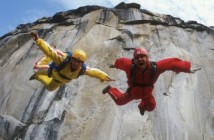
The Missing Picture (2013)
Director: Rithy Pahn
Country: Cambodia | France
Genre: Documentary
Official Site: Here
Editor’s Notes: The Missing Picture opens in limited release tomorrow, March 19th.
Documentaries attempt to capture reality…or something close to it. These films want to be mirrors that project the flaws and blemishes of its subjects. Instead of constructing hegemonic narratives through fabricated images, documentaries weave stories out of “real” images and create issues that may never be fully solved. Rithy Panh exacerbates the limitations of documentaries through L’image manquante (The Missing Picture), a film that seeks not to create a mirror to reality, but instead tries to reconstruct the images of Panh’s adolescence that were stolen by the Khmer Rouge. It is a harrowing coming of age story that turns us, the on looking viewer, into collaborators in Panh’s cathartic quest to find the voices of a silent generation of deceased Cambodians.
It is a harrowing coming of age story that turns us, the on looking viewer, into collaborators in Panh’s cathartic quest to find the voices of a silent generation of deceased Cambodians.

A typical documentary uses talking heads or living subjects, however The Missing Picture opts to use crude clay figures as proxies that visually depict Panh’s life under the Khmer Rouge. Images of these still figures are interspersed with archival footage (actual footage of the workers’ suffering was outlawed, and those in power used propaganda to create a brighter image of the proletariat struggle). These clay figures document an intangible reality – or a missing picture – of Panh’s troubled adolescence. These proxies remind me of the animated film The Adventures of Mark Twain in which a robotic angel named Satan animates clay figures made by Huck Finn and Tom Sawyer (upon seeing the pain and violence the clay figures cause, Satan crushes them, saying that mercy is a flaw only humans possess). Unlike the robotic angel Satan, Panh – who possesses the “human flaw” of mercy– does not look at the clay figures with a frigid distance, but endures the sorrow of recreating his own traumatic memories. These figures may be an approximation – a proxy image, if you will – of the pain that Panh endured, but they will never be able to fully rid him of the ghosts and skeletons that hide in his closet.
The Missing Picture is not a traditional documentary, nor does it aim to be one. It challenges the notion of what these filmic images are and what they represent…
Like Ari Folman’s Waltz with Bashir and Sarah Polley’s Stories We Tell, The Missing Picture depicts secrets and trauma through techniques that distance viewers from actual images of the events while simultaneously (and paradoxically) creating an intimate reality for the viewers, the directors, and the subjects (Bashir uses animation while Stories uses grainy “home movies”). It is a coping mechanism, or a way to search for a conclusion to a lingering issue. In watching these directors cope with these lingering issues, we, the viewers, also become involved in the search for these “missing pictures.” We give life to these images of proxy clay figures, which is why the narrator ends the film by saying, “This missing picture, I now hand over to you.”
The Missing Picture is not a traditional documentary, nor does it aim to be one. It challenges the notion of what these filmic images are and what they represent: they are a substitution for reality, one that we, as viewers and consumers of media, seek and fetishize as if it is reality. Panh understands that he can never come close to finding that “missing picture,” but he can create a close approximation of that reality with the tools at his disposel: clay figures, a memory, and the ghosts that surround him.
[notification type=”star”]88/100 ~ GREAT. In looking at tragedy and suffering, Panh creates a beautiful piece of art. It is a testament to how much faith we put into pictures/images to leave some indication that we once lived.[/notification]



